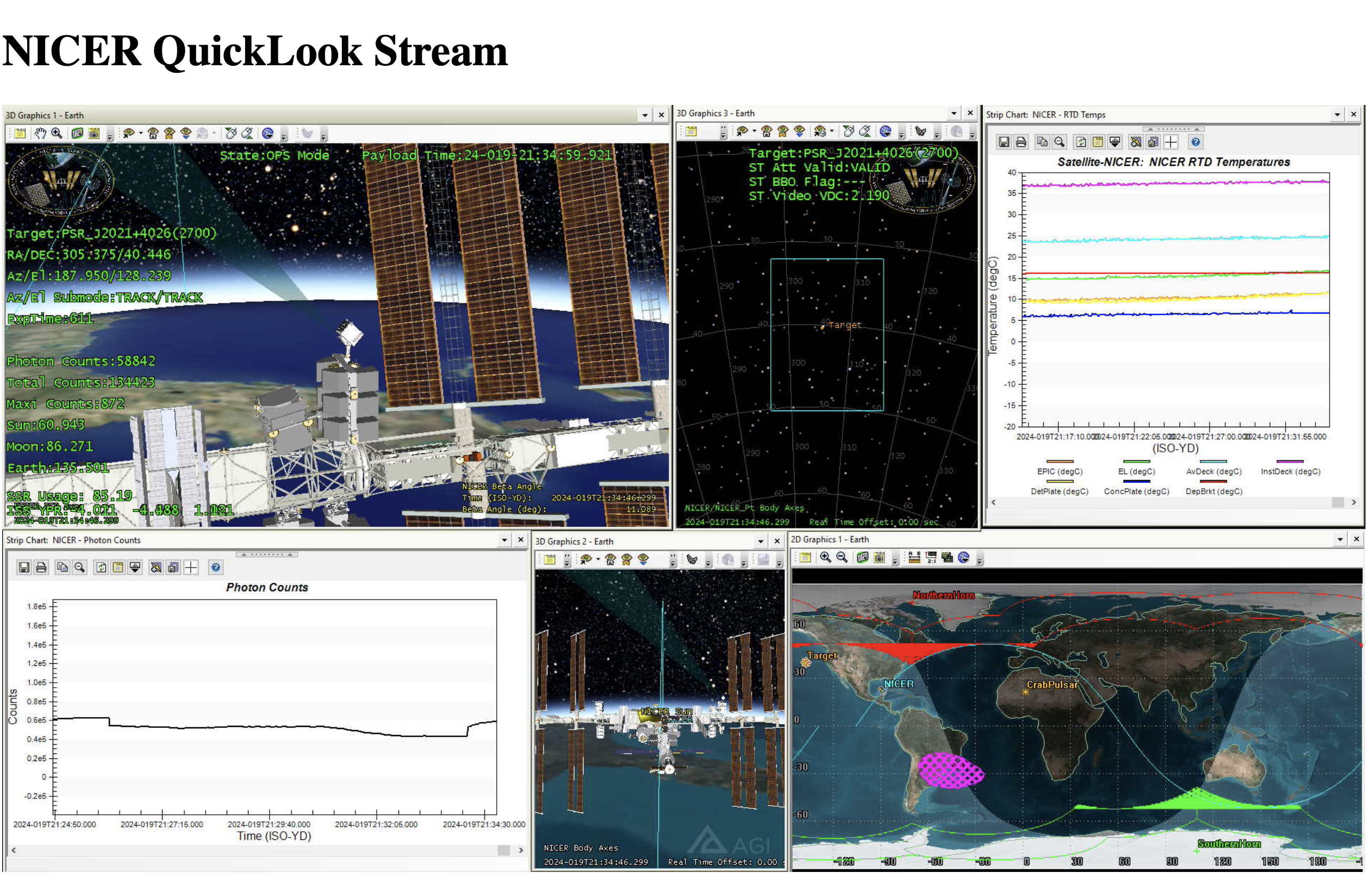NICER / ISS Science Nugget
for January 18, 2024
Earth as a giant sunshade
Last August, a previously unknown and exceptionally bright black-hole binary system, Swift J1727.8-1613, burst onto the scene. NICER tracked it extensively for as long as orbit-night target visibility was available: the Sun's steady encroachment into regions of the sky in the direction of the inner Milky Way, coupled with NICER's reduced capability to observe in bright daylight conditions (due to the light "leak" damage it suffered in May 2023), put an end to the Fall 2023 monitoring campaign in mid-October.
Swift J1727 remains within NICER's nominal 45-degree Sun avoidance cone until January 28, but over the past 10 days fortuitous orbital geometry has enabled an early return of this target to NICER's observing schedule: the X-ray source rises above the Earth's horizon a few minutes before the Sun does, enabling exposures of several hundred seconds, in dark conditions, on many successive orbits (see Figure). The outburst of Swift J1727 had already peaked in brightness on 3 October, 2023, and begun a gradual decline; its brightness when NICER picked it up again on 7 January was one-quarter what it was when last seen on 9 October, and it continues to fade slowly. The binary system is no longer displaying significant brightness fluctuations, consistent with expectations for the "soft" state, in which the X-ray flux is dominated by thermal emission from the accretion disk. At some point in the continued evolution of this outburst, a transition is expected to the "hard" state as the disk is depleted of matter and emission becomes dominated by the faint and tenuous but very hot gas in the so-called corona. NICER will aim to observe that transition, to probe the poorly understood relationship between disk and corona around stellar-mass black holes.

A screenshot from the live visualization of NICER in operation (available at https://heasarc.gsfc.nasa.gov/docs/nicer/ql/nicer_ql2.html) shows an in-progress observation of the black-hole binary Swift J1727.8-1613 on January 18, 2024. As ISS flies over Australia, moments before orbit-dawn, NICER is able to observe the target, which produces a photon detection rate of more than 11,000 counts per second, for 4-5 minutes while the Earth obscures the Sun.
<< Previous
Main Index
Next >>